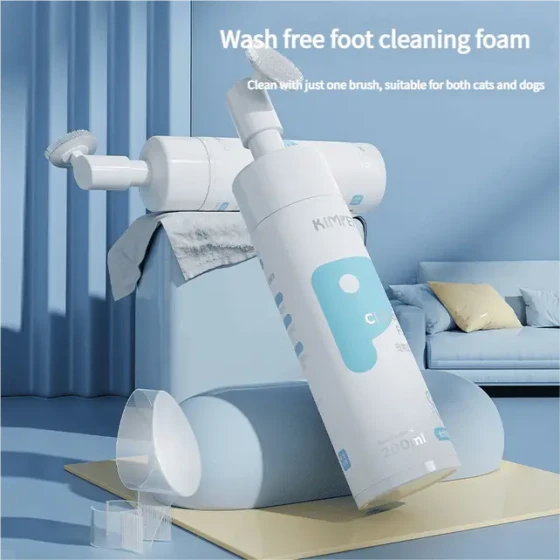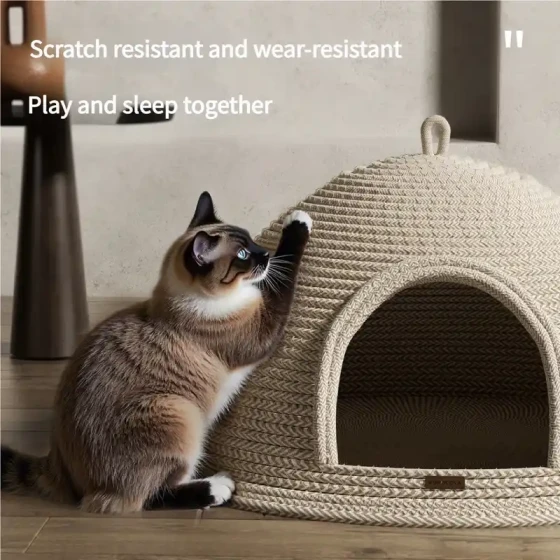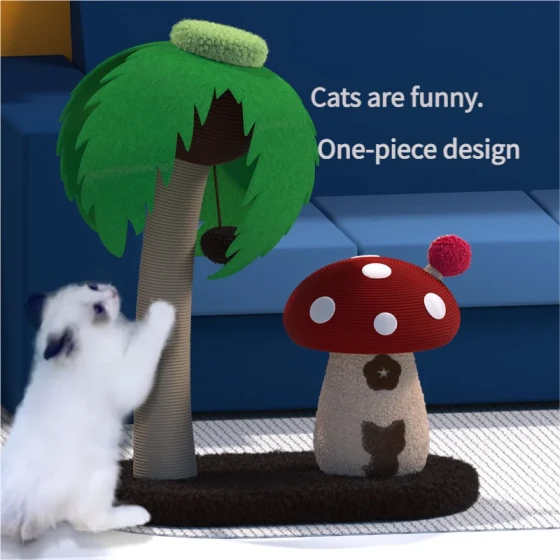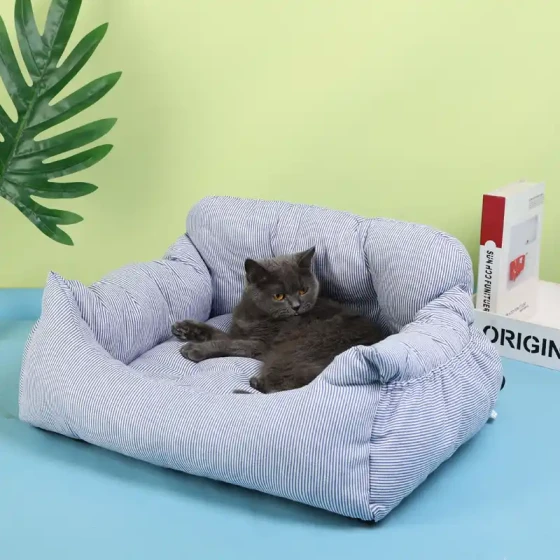Differences between Tabby Cats and American Shorthairs_Home Feeding and Personality Comparison
On the weekend, I went to a friend's house to play with cats. She mysteriously asked me, “Do you think my cat is an American Shorthair or a Tabby? The old man downstairs insists I was cheated by a cat dealer and bought a local cat.” I squatted under the cat tree and observed carefully — the round face looked like a little bun, the eyes were green like two olives, and the tail tip even had rings of stripes. This was clearly a standard American Shorthair. But my friend's question reminded me of many beginners' confusion: Tabby cats and American Shorthairs, this pair of "look-alikes but different in temperament," how exactly should they be distinguished? Which one is easier to raise?
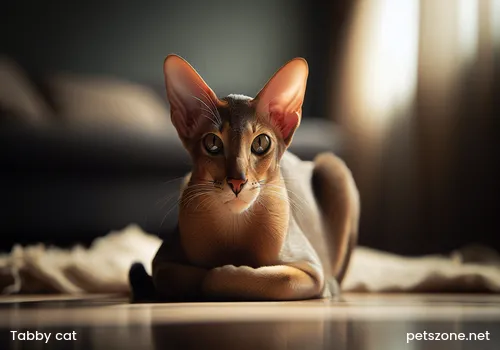
The above picture is a tabby cat
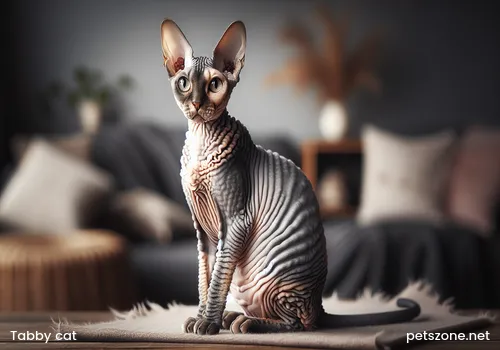
The above picture is an American Shorthair cat
1. First look at the face: Quickly "verify the identity" by appearance details
Many people find tabby cats and American Shorthairs similar mainly because both have tabby stripes. But looking closely, their “ID cards” are hidden in these small details:
1. Face shape: Bun face vs triangular face
The American Shorthair’s face resembles a kneaded round dough, especially the males who tend to develop cheeks after adulthood. Overall it is an oval shape, naturally giving a “round and cute” buff. The tabby cat’s face is closer to a wedge shape, with a sharper jawline. Even when fat, the face won’t become round like a bun — this is probably the “Chinese native cat” pride encoded in its genes: to maintain a predator’s sharpness.
2. Eyes: gentle almond vs sharp lifted corners
American Shorthairs have standard almond-shaped eyes with slightly downward drooped corners, like two mild glass beads. Their eye color is mostly yellow-green or green, always looking at you with a “please pet me” soft expression. Tabby cats have flatter eyes with lifted outer corners, giving a “who are you?” evaluating look. Their pupil color is often yellow, and some tabbies have an eye aura of “I’m fierce” — but once familiar, that gaze changes to “human, my food bowl is empty” prompting.
3. Body type: sturdy athlete vs agile assassin
American Shorthairs have a larger frame, weighing 4-6 kg as adults. Their figure is sturdy with muscular feel but not skinny—like an athletic sunny boy. Tabby cats resemble “long-distance runners”: slim build with slender but strong limbs (after all, natural selection produced these hunting experts), usually weighing 3-5 kg. With the same body length, tabbies appear more slender.
4. Patterns: "Chuan" character back vs bone spur pattern
This is the most intuitive difference! The classic American Shorthair tabby pattern is a "Chuan character back" — three distinct black stripes on the back parallelly extending, resembling the Chinese character "川" (Chuan). The side patterns are also more regular, resembling butterfly shapes. The tabby cat’s pattern is the "bone spur pattern," where the back stripes are finer and irregular, like lines poked by bone spurs, giving a more wild look overall. If you see an American Shorthair with bone spur patterns, it’s likely crossed with a native cat bloodline.
5. Tail: long smoke ring vs short thick straight
American Shorthairs have relatively long tails, tapering gradually from base to tip, with ring-shaped stripes (similar to a tiger’s tail). When wagged, the tail looks like a little fluffy whip. Tabby cats have shorter tails roughly equal in length to their body, with a thick base and completely straight, feeling stiff to the touch—after all, these support their "roof-rat climbing and wall-jumping" parkour skills.
2. Very different personalities: One is a "little sun," the other a "wild kid"
Appearance is the threshold, but personality really determines whether you can get along. My friend used to raise an American Shorthair and now has a tabby. She summarized perfectly: “American Shorthairs are like kindergarten teachers, tabbies like the little overlords in the alley.”
American Shorthair: gentle but a "drama queen," suitable for families needing companionship
The personality of American Shorthairs can be summarized as “stable.” They are highly adaptable; when moving to a new home, they won’t hide under the bed for three days. Instead, they will actively sniff new toys and rub against your pants. They are very tolerant of children and other pets—I’ve seen a friend’s American Shorthair get its tail pulled by a 3-year-old and just tilt its head, licking its paws afterward. But don’t assume it’s “zen”; it’s actually a hidden “drama queen”: it will sit beside you while you work overtime, jump onto the sofa pillow and nudge your hand with its head when you watch shows, and always sleep as close to you as possible — a typical “I’m not clingy, but I want to stay within your sight.”
Tabby: independent but a “loyal dog,” suitable for owners who like boundaries
Tabby cats’ personality is closer to “wild type.” As Chinese native cats, they have undergone natural selection and carry an innate pride of “I can handle myself.” As kittens, they might hide under the sofa monitoring you for three days, only approaching once they confirm you’re a “long-term food provider.” Try to forcibly hug one? It may twist away. But at mealtime, it will sit by the bowl right on time and rub your leg with its head — its way of saying “you did well today.” Once tamed, a tabby is as loyal as a dog: waiting at the door when you come home, quietly lying by your feet when you are sick in bed, even bringing you cockroaches (or plastic toys) it caught, as if to say “look, I take care of you.”
But beware, a tabby’s wildness may bring small troubles: they are especially interested in birds outside the window and stray cats downstairs, and can easily dash out when the door opens to “explore.” A colleague’s tabby once ran away for three days and came back carrying half a sparrow, which scared her stiff — so it’s best to seal windows or train them from young “no going out without a leash.”
3. Wallet and energy accounts: Which one is more cost-effective to raise?
Raising cats isn’t an impulse; you must calculate the “economic account” and the “time account.”
Price: from "free adoption" to “a few thousand”
Tabby cats, as Chinese native cats, are priced low enough to be “touching”: most can be adopted for free. Even if bought, common phenotypes cost only 0-150 yuan (race-class tabbies with superior bloodline might be pricier but are rare). American Shorthairs, as purebred cats, have a wide price range: pet-level ASHs (no pedigree certificate) cost 1500-3000 yuan, while those with CFA pedigree certificates can be 5000 yuan or more. This is mainly because American Shorthairs require artificial breeding to maintain pedigree, while tabbies have large populations and strong reproductive abilities, making “rarity” practically non-existent.
Daily expenses: tabbies are “rough care,” American Shorthairs are “delicate”
Tabby cats have “iron stomachs”: they are not picky eaters, can eat regular cat food or even homemade meals (low oil, low salt), and rarely have soft stools. They shed little — thanks to short, coarse hair that only needs sweeping during shedding seasons. But their abundant energy demands more toys (cat wands, climbing trees) to expend energy; otherwise, they might wreck the house (like scratching the sofa to create “artistic patterns”).
American Shorthairs have more “delicate” stomachs: although not as fragile as Ragdolls, eating the wrong food can cause soft stools. It’s recommended to pick cat food with probiotics. Their shedding is like “dandelion level” — especially during spring and autumn molting seasons, clothes, sofas, and cups are covered in cat hair, requiring daily grooming to avoid hairball issues. Fortunately, their moderate activity levels mean a cat scratching board plus occasional cat wands suffice, and their likelihood of wrecking the house is much lower than tabbies.
Medical costs: tabbies are “tough,” American Shorthairs have “fewer minor illnesses”
Tabbies’ physique results from “natural selection,” and they rarely have hereditary diseases. They can often recover from colds or diarrhea by themselves (though severe cases require veterinary care). American Shorthairs also have good constitution; common issues include obesity (due to overeating) and dental diseases (requiring regular teeth brushing), but the overall incidence rate is much lower compared to breeds like Ragdolls or Scottish Folds.
4. So, who to choose? Look at your family’s "cat design"
There is no absolute “best” cat, only the “most suitable.” Based on different family needs, I summarized several reference dimensions:
Limited budget/first-time cat owners: choose tabbies
Zero cost adoption + undemanding eating + low illness rate makes it a “gospel for frugal raising.” Suitable for students, young workers, or beginners afraid of “pitfalls.”
Families with children/multiple pets: choose American Shorthairs
The gentle and tolerant temperament of American Shorthairs fits better with kids and other cats or dogs. My cousin’s house has two kids; their American Shorthair has been tail-pulled and hugged like a doll since young but remains patient, a real “child-rearing helper.”
Like interaction/need companionship: choose American Shorthairs
American Shorthairs offer measured affection — not overly disturbing but not cold either. Suitable for single working adults who want a “little shadow” at home to instantly erase loneliness.
Appreciate wild beauty/want a "unique" cat: choose tabbies
The “untamed” and “proud” traits of tabbies make cohabitation more fun. Suitable for owners who enjoy observing cat behaviors and experiencing the sense of “conquering” (though ultimately often conquered by the cat).
Finally, an interesting observation: most friends with tabbies are “pragmatists,” thinking “cats don’t need to be expensive, just matching your preference.” Friends with American Shorthairs usually want “life rituals,” appreciating purebred cats’ stable personality and “delicacy.” But no matter which you choose, a cat’s “soul” is the key—after all, when you pick a cat, the cat is also picking you.
Therefore, instead of struggling over “which is better,” visit catteries or adoption centers and spend half an hour observing the cat nests: which cat actively rubs your hand? Which cat dares to jump on your lap? Which cat’s eyes make your heart skip a beat — that cat is the one most suitable for you.
